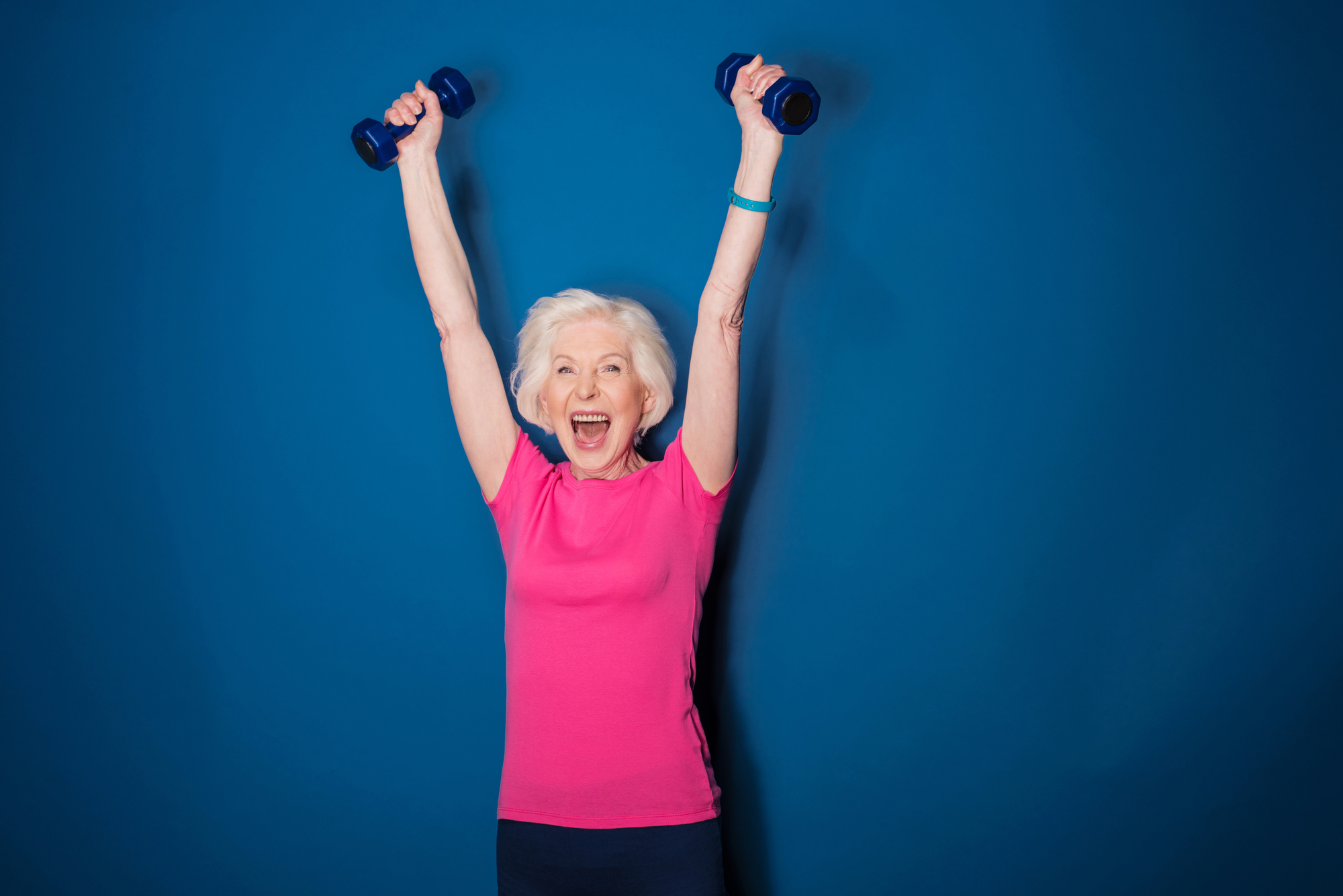

Vitamin supplement companies want you to believe their products stave off disease. They can save you from heart attacks and broken bones and common colds. Or at least they say they can. But too often, those claims aren’t based on scientific studies, and consumers are left either mislead or unsure of what can actually help them.
Luckily, we have a panel of people whose job is to evaluate the evidence for interventions like vitamin supplements. They’re called the U.S. Preventive Services Task Force, and they just released their latest judgment: calcium and vitamin D probably don’t help the elderly stave off broken bones. The one thing that they think will do the trick? Exercise.
Here’s what you need to know.
Just the key facts
Lots of older people are worried about falling, and though breaking a hip is now a cliché, it’s also a serious problem for elderly Americans. Alex Krist, a leading member of the USPSTF, noted in a recent interview with the journal JAMA that there are about two million fractures a year, and that those people who fracture their hips often end up being unable to walk again. What’s more, he notes that “more than half require assistance with daily activities, and 20 to 30 percent die within a year of their fracture.” This is why it’s so important to understand which interventions really work to prevent falls and fractures.
But when the USPSTF looked at the studies that have been done investigating whether calcium supplements, vitamin D pills, or both combined had any positive effect, they found evidence that lower doses did absolutely nothing. They now recommend against taking between 400 IU vitamin D (standard pills are often around 2000 IU) or 1000 mg of calcium. As for higher doses, there just wasn’t enough evidence to make a recommendation either way. Calcium supplements did seem to increase the likelihood of kidney stones, especially at high doses, so it’s possible taking more would be harmful. Krist also noted that too much calcium can build up inside arteries, increasing risk of vascular disease in the process.
It’s important to note here that this is all only true for adults who aren’t at high risk of osteoporosis, which is a weakening of bones that makes them brittle. Those who are at high risk would benefit from added calcium and potentially also from vitamin D, which helps to metabolize calcium inside your body.
Since falls are still a huge problem for the elderly, though, the USPSTF also examined which interventions could actually work. After all, there were 29 million falls in 2015 alone, and 33,000 deaths resulting from those falls. Vitamin D did nothing. Neither did multifactorial interventions, which would entail preparing a plan for nutrition, mobility exercises, and so on for individual patients. The thing that actually does work is exercise. It was only a modest amount, but it helped even those elderly adults who were at high risk of falling. Exercise reduced the relative risk of a fall to 0.89 (compared to a risk of 1.0 without exercise), and reduced the risk of injurious falls to 0.81 (again, down from a default risk of 1.0). The type of exercise varied a lot between all the studies the USPSTF looked at, but generally included three sessions per week of balance/functional training, resistance work, and flexibility components.
One important caveat
In an accompanying editorial to these USPSTF recommendations, David Reuben, a geriatric specialist at UCLA who wasn’t involved in the report, notes that it’s possible some vitamin-based supplements actually could help—it’s just that people don’t take them regularly enough. He points out that in one of the key studies, if you looked only at the people who took at least 80 percent of their supplements you could see a 29 percent reduction in hip fractures.
Of course, if people aren’t able to stick to a vitamin regimen—even one prescribed for a clinical trial—it may be useless to prescribe it as an intervention anyway.
The upshot
If you aren’t at high risk for osteoporosis: don’t bother with vitamins! The evidence all says that you’re unlikely to see any benefit—unless you have a deficiency—and you could end up with a whole new set of problems if you take too much.
If you are at high risk for osteoporosis: go talk to your doctor first, but you’d likely benefit from calcium supplements, possibly alongside vitamin D pills.
Either way: get some exercise! Krist says he tells all his patients (he’s a practicing physician, as well as being on the USPSTF) to at least get out and walk for 30 minutes several times a week, but notes this can be difficult for his older patients who are too scared of falling. He tries to get those people into some kind of regimented program that makes them feel safer, and aims for them to train three times a week.
Resistance and strength training help build muscles that are important for all your daily activities. Walking, standing up from a chair, even just sitting down—you can only help yourself out by getting regular workouts. And apparently, your bones will thank you.
